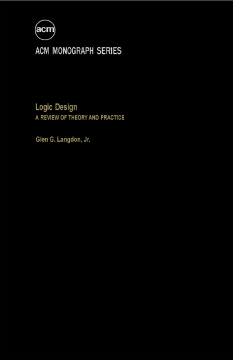
Additional Information
Book Details
Abstract
Logic Design: A Review of Theory and Practice describes computer design focusing on the theoretical and practical relationships of sequential machines. This book reviews the major technologies that make the computer, particularly the switching circuit design involving vacuum tubes, discrete transistors, and integrated circuits. The switching theory associated in the logic design of sequential machine models and synthesis techniques lead to understanding of constraints due to stray delays, input change restrictions, and memory element operation. This text also describes the logic design processes including the use of flow charts, design languages, simulations, and system timing. Three aspects needed prior to the design phase that should be considered by the programmer are data flow, the micro-operations (and their sequencing), and the timing (machine cycle or logic). The significance between theoretical and mathematical models can then be determined through fault detection, masking, digital simulation, and test generation. This book can be beneficial for computer engineering instructors and advanced students in computer science.
